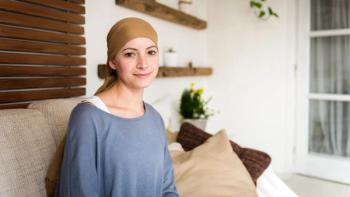
- Winter 2015
- Volume 14
- Issue 1
Symptom Management in Childhood Cancer Patients: There's an App for That
Could using electronic devices help alleviate symptoms and improve patient-physician communication for children and young adults with cancer?
It's not unusual to see kids with mobile devices, tablets or video game systems, especially when they are in the hospital being treated for cancer. Now, one research nurse is looking into whether using electronic devices could help alleviate symptoms and improve patient-physician communication.
Lauri Linder, an assistant professor at the University of Utah and an advanced practice nurse at Primary Children’s Hospital in Salt Lake City, and her team have developed an iPad application that adolescents and young adults (AYAs) with cancer could use to help communicate symptoms to their medical teams. The app, Computerized Symptom Capture Tool or C-SCAT, allows patients to describe, group and report symptoms with a tap of a finger.
The app helps patients identify symptoms and group them together by drawing lines between them on the screen. Patients can categorize the groups with titles, such as “Not Myself Today.”
“Because the focus of this initial study was to evaluate the feasibility and acceptability of the app, we took the time to ask participants whether they thought other people their age would prefer completing the features of the app electronically (as they had) or using a paper-and-pencil approach,” Linder says.
Several participants mentioned the electronic version was more fun, less like homework, and was more easily managed when dealing with neuropathy symptoms. “Eighty-three percent endorsed a preference for an electronic versus paper-and-pencil based approach.”
The next step, Linder says, is working on a way the app can be a tool for the patient to self-manage symptoms.
“We see the C-SCAT tool as a resource for supporting AYAs in gaining a greater awareness of symptoms they are experiencing and how they are related,” she says. As one participant noted, “You don’t really realize how many you have until it’s spelled out in front of you.” “We also see the C-SCAT as a resource that AYAs can share with their health care providers to have conversations about their symptom experience and to develop symptommanagement strategies to alleviate the symptoms they are experiencing.”
Linder’s app development and research was funded by a grant from
Articles in this issue
over 10 years ago
Pipelineover 10 years ago
CancerFilms.orgover 10 years ago
Council Would Accelerate Development of Prostate Cancer Diagnosticsover 10 years ago
Research Updates from ASH & SABCSover 10 years ago
Camp Kesem for Kidsover 10 years ago
When Your Life Is Touched by Cancerover 10 years ago
Help With the Costs of Targeted Drugs




